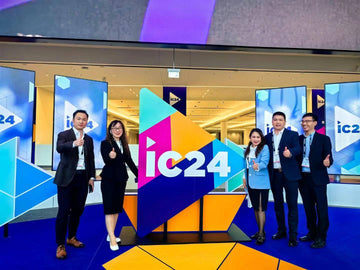
Smart Boards vs Traditional Projectors: Which Is Better for Modern Classrooms?
In today’s fast-paced world, technology is transforming education. Traditional teaching tools, like blackboards and projectors, are being replaced by more advanced solutions. Among these, smart boards have emerged as a game-changer in modern classrooms. But how do they compare to the traditional projector systems that many schools still rely on? Let’s dive into the key differences and evaluate which is better for today’s educational needs.

1. Interactive Features: A Leap Beyond Passive Learning
Smart Boards: One of the standout features of a smart board is its interactivity. Teachers and students can write, draw, and manipulate content directly on the board, creating a more engaging learning environment. Students can touch the screen, drag and drop elements, and even solve problems in real time. This level of interaction encourages active participation and enhances learning retention.
Traditional Projectors: In contrast, projectors are typically non-interactive. They simply display content from a connected computer or device. The teacher often controls the lesson through a mouse or keyboard, and the students passively watch. While projectors can show videos, slides, and images, they don’t offer much room for students to engage directly with the content.
2. Visual Quality and Size
Smart Boards: When it comes to visual clarity, smart boards are designed to deliver high-quality resolution and vibrant images. Many smart boards are capable of producing 4K resolution, making text, images, and videos incredibly sharp and easy to read. Furthermore, larger smart boards (ranging from 55” to 86”) allow teachers to present information clearly even in large classrooms.
Traditional Projectors: While projectors can also offer good resolution, the image quality largely depends on the projector’s model and the surface it’s projected onto. In many classrooms, projectors are displayed on whiteboards or blank walls, which can cause colors to appear washed out. Ambient lighting can also reduce the effectiveness of a projector, making it harder for students to see the content clearly.

3. Collaboration and Engagement
Smart Boards: The collaboration potential of a smart board is unmatched. Multiple users can interact with the board at once, making it perfect for group activities, brainstorming sessions, and collaborative learning. Smart boards can integrate with various digital tools, enabling teachers to pull up educational apps, online resources, and multimedia content all in one place.
Traditional Projectors: While projectors can display educational content, they fall short when it comes to collaboration. Only the teacher or a student at the front of the room can control the screen. In larger classes, this may limit interaction and participation, leaving some students disengaged.
4. Ease of Use and Setup
Smart Boards: Smart boards are designed to be intuitive. Many modern smart boards have touchscreen capabilities, allowing teachers to use them just like a tablet or smartphone. Plus, most smart boards come with built-in software that integrates with other tools and apps, reducing the need for complex setup or additional devices.
Traditional Projectors: Projectors often require additional equipment such as a computer, cables, or an external device to connect and display content. Setup can be more complicated, and projectors typically need to be adjusted for focus and alignment every time they are used.
5. Durability and Maintenance
Smart Boards: Smart boards are built for longevity and often come with a durable touchscreen surface that can withstand regular use. However, they do require occasional software updates and can be more expensive to repair if damaged.
Traditional Projectors: Projectors are generally less durable in the long term. Lamp-based projectors have a limited lifespan and can be costly to replace. Additionally, projectors require periodic maintenance to ensure the lens is clean and the bulb is functioning properly.
6. Cost Consideration
Smart Boards: The initial cost of a smart board is higher compared to traditional projectors. However, the long-term benefits, including reduced need for external devices and increased classroom engagement, can make it a cost-effective investment in the long run.
Traditional Projectors: While projectors are generally less expensive upfront, they may incur ongoing costs for replacement bulbs, maintenance, and upgrades. In the long run, these costs can add up, especially if the projector needs to be replaced more frequently than a smart board.
Conclusion: The Future of Modern Classrooms
When it comes down to it, smart boards for classroom offer a much more dynamic, interactive, and collaborative learning environment than traditional projectors. The ability to engage students with touch-based interaction, integrate multimedia content, and encourage group participation makes smart boards an ideal choice for today’s classrooms. While projectors still have their place in some settings, the advanced features and long-term benefits of smart boards make them the better option for creating a future-ready educational space.
As schools continue to embrace digital learning, it’s clear that the smart board for classroom is leading the way. It’s not just a display tool — it’s a complete interactive display system that can transform how students learn and teachers teach. So, the next time you’re thinking about upgrading your classroom tech, consider switching to a smart board for classroom. The learning experience will be worth it.




0 comments